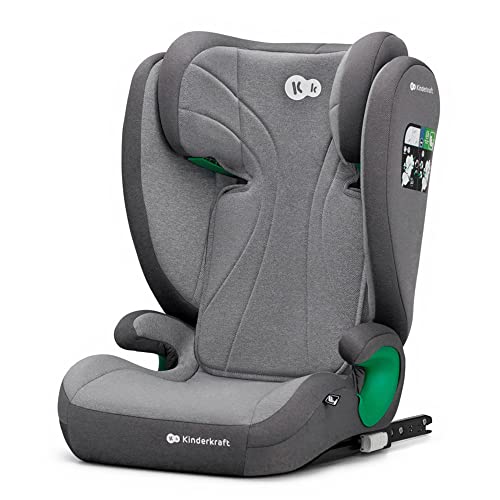The Comprehensive Guide to Choosing the Right Pram for Newborns
The arrival of a newborn brings both immense happiness and an array of decisions that parents need to navigate. One of the vital purchases is choosing the right pram, which not just ensures the baby's safety but likewise supplies benefit for moms and dads. This guide aims to offer an extensive appearance into choosing the proper pram for newborns, discussing various types, functions, security considerations, and maintenance suggestions.
Understanding the Types of Prams
Prams differ widely in design and functionality, which can be overwhelming for new moms and dads. Here's a breakdown of the most typical types of prams offered in the market:
| Type of Pram | Description | Pros | Cons |
|---|---|---|---|
| Traditional Prams | Developed for infants, these prams normally have a deep bassinet. | Comfy for newborns, Safe for sleeping. | Bulky and heavy, Hard to maneuver in tight areas. |
| Travel Systems | A mix of a car seat and a stroller, enabling simple shift in between cars and truck and stroller. | Versatile and practical, Cost-effective. | Might be much heavier than standalone strollers, Not all elements appropriate for newborns. |
| Lightweight Strollers | Compact and simple to maneuver, these are perfect for parents on the go. | Portable and easy to utilize, Generally more inexpensive. | Less cushioning, May not recline totally for newborns. |
| Convertible Strollers | Strollers that can adjust from a carrycot for newborns to a young child stroller. | Multi-functional and long-lasting, Adjustable configurations. | Can be costly, May require more upkeep. |
| All-Terrain Strollers | Constructed for rough surfaces, these strollers normally include larger wheels. | Durable for outdoor usage, Stable on various surfaces. | Heavier and bulkier, Can be hard to steer indoors. |
Key Features to Consider
When selecting a pram for newborns, numerous features can significantly affect functionality and safety. Here are essential functions to remember:
- Safety Harnesses: Look for a pram that includes a five-point security harness to make sure the baby remains safe and secure while in transit.
- Reclining Seat: A completely reclining seat enables newborns to lie flat, which is vital for their spinal column and respiratory health.
- Suspension System: A great suspension system provides a smoother trip, necessary for the delicate bodies of newborns.
- Brake System: Ensure the pram has a trustworthy brake system to avoid accidents. Hand brakes or foot brakes can be effective alternatives.
- Storage Space: Consider a pram with adequate storage space for diaper bags, shopping, or other essentials.
- Weight and Foldability: Choosing a light-weight option that folds easily is crucial for benefit, especially for public transport.
Security Considerations
Prioritizing security is vital when it concerns prams for newborns. Here are important safety suggestions to guarantee the well-being of your baby:
- Check for Stability: Make sure the pram stays stable when stationary. A wide base can supply increased stability.
- Avoid Overloading: Only place items advised by the maker in the storage basket; excess weight can result in tipping.
- Regular Maintenance: Inspect the wheels, brakes, and harness systems consistently to guarantee they work correctly.
- Buckle Up: Always utilize the security harness, even for fast journeys, to prevent the baby from slipping or falling out.
- Look For Age Recommendations: Follow the producer's standards concerning weight limitations and age recommendations for safety.
Maintenance Tips
Looking after a pram guarantees its longevity and security for your newborn. Here are important maintenance suggestions:
- Regular Cleaning: Wipe down the pram frame and wash materials according to producer instructions to keep it hygienic.
- Check the Wheels: Check wheels for damage and clean them routinely to avoid obstructed motion.
- Check Folding Mechanism: Ensure the folding mechanism runs efficiently without sticking or jamming.
- Oil Moving Parts: Apply the appropriate lube to moving parts to make sure peaceful and smooth operation.
- Store Properly: When not in usage, store the pram in a dry area to avoid rust and maintain material stability.
Often Asked Questions (FAQs)
1. For how long can a baby remain in a pram?
For newborns, it is generally advised to limit undisturbed time in a pram to about 1-2 hours to avoid issues with development and blood circulation.
2. Which pram is best for a newborn?
The very best pram for a newborn is one that offers a totally flat recline, has a good security harness, and meets existing safety requirements. Lots of parents choose travel systems for their adaptability.
3. Can I use a stroller without a safety seat for a newborn?
It's suggested to utilize a stroller with a flat or near-flat recline for newborns. Some strollers are only ideal from six months and up, so check the maker's assistance.
4. When should I change from a pram to a stroller?
You can move from a pram to a stroller when your baby can stay up independently, generally around six months, but this can vary. It's constantly best to consult the individual pram or stroller guidelines.
5. What is Double Pram Compact to clean my pram?
Constantly refer to the producer's directions, but usually, you can clean materials with mild soap and water and clean down hard surfaces with disinfectant wipes.
Selecting the best pram for a newborn is a substantial choice that affects both the baby's convenience and the moms and dad's lifestyle. By comprehending the kinds of prams offered, key features to think about, security strategies, and maintenance suggestions, parents can make educated decisions that boost their family's mobility and make sure the safety of their little ones. Investing time in research study now settles in the long run for satisfying trips and treasured memories.

